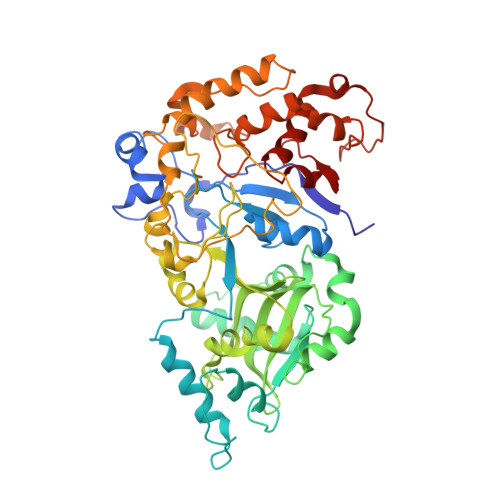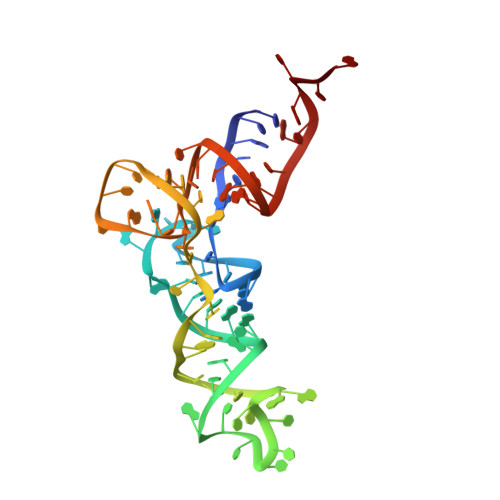The structural basis of tRNA recognition by arginyl-tRNA-protein transferase.
Abeywansha, T., Huang, W., Ye, X., Nawrocki, A., Lan, X., Jankowsky, E., Taylor, D.J., Zhang, Y.(2023) Nat Commun 14: 2232-2232
- PubMed: 37076488
- DOI: https://doi.org/10.1038/s41467-023-38004-8
- Primary Citation of Related Structures:
8E3S, 8FZR - PubMed Abstract:
Arginyl-tRNA-protein transferase 1 (ATE1) is a master regulator of protein homeostasis, stress response, cytoskeleton maintenance, and cell migration. The diverse functions of ATE1 arise from its unique enzymatic activity to covalently attach an arginine onto its protein substrates in a tRNA-dependent manner. However, how ATE1 (and other aminoacyl-tRNA transferases) hijacks tRNA from the highly efficient ribosomal protein synthesis pathways and catalyzes the arginylation reaction remains a mystery. Here, we describe the three-dimensional structures of Saccharomyces cerevisiae ATE1 with and without its tRNA cofactor. Importantly, the putative substrate binding domain of ATE1 adopts a previously uncharacterized fold that contains an atypical zinc-binding site critical for ATE1 stability and function. The unique recognition of tRNA Arg by ATE1 is coordinated through interactions with the major groove of the acceptor arm of tRNA. Binding of tRNA induces conformational changes in ATE1 that helps explain the mechanism of substrate arginylation.
Organizational Affiliation:
Department of Biochemistry, Case Western Reserve University, Cleveland, OH, 44106, USA.




















